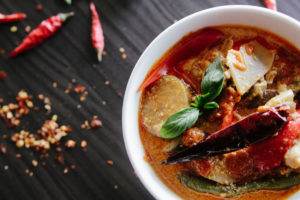
Vietnamese cuisine is renowned for its vibrant flavors, fresh ingredients, and diverse dishes that reflect the country’s rich culinary heritage. Among the most beloved and iconic are pho, vermicelli (bun), and rice platters (com tam), each offering a unique glimpse into Vietnam’s history, culture, and culinary traditions. Let’s delve into the origins and evolution of these dishes that have captivated palates around the world.

Pho: A Nourishing Legacy
Pho, pronounced “fuh,” is perhaps Vietnam’s most famous culinary export, celebrated for its aromatic broth and tender rice noodles. Originating in the early 20th century in northern Vietnam, pho was initially influenced by French colonial occupation, which introduced beef into Vietnamese cuisine. The dish evolved from humble beginnings as street food to become a national treasure, enjoyed by people from all walks of life.
The preparation of pho involves simmering beef bones, charred onion, ginger, and spices like star anise and cloves for hours, resulting in a flavorful broth. Thinly sliced beef or chicken is added, along with fresh herbs such as cilantro, Thai basil, and mint. Served with a side of bean sprouts, lime wedges, and chili peppers, pho is customizable to individual tastes, making it a versatile and comforting meal.
Vermicelli (Bun): A Culinary Journey
Vermicelli, known as bun in Vietnamese, refers to thin rice noodles that are a staple in Vietnamese cuisine. These noodles are typically served cold and topped with a variety of fresh vegetables, herbs, grilled meats or seafood, and often drizzled with a tangy nuoc cham (fish sauce-based dressing). Bun dishes vary widely across Vietnam, reflecting regional preferences and local ingredients.
One of the most popular bun dishes is bun thit nuong, featuring grilled pork served over vermicelli with pickled vegetables, herbs, and roasted peanuts. This dish exemplifies the balance of textures and flavors that are characteristic of Vietnamese cuisine—tender meat, crunchy vegetables, fragrant herbs, and a sweet-savory dressing.
Rice Platters (Com Tam): A Southern Specialty
Com tam, or broken rice, is a specialty of southern Vietnam that originated as a way to utilize broken grains of rice that were considered less valuable. Over time, com tam evolved into a beloved dish known for its tender grilled meats, pickled vegetables, and nuanced flavors. The dish typically includes a generous portion of broken rice topped with grilled pork chop (suon nuong), shredded pork skin (bi), steamed egg meatloaf (cha trung), and a side of pickled daikon and carrots.
The richness of com tam lies not only in its flavors but also in its cultural significance. It reflects the resourcefulness of the Vietnamese people and their ability to transform humble ingredients into a dish that is both satisfying and flavorful.

Celebrating Vietnamese Culinary Heritage
Today, Vietnamese pho, vermicelli, and rice platters are enjoyed not only in Vietnam but also in Vietnamese communities around the world. These dishes continue to evolve as chefs experiment with new ingredients and techniques while remaining true to their roots. Whether you’re savoring a steaming bowl of pho on a chilly day, enjoying a refreshing vermicelli salad in the heat of summer, or indulging in a hearty com tam platter, each dish tells a story of tradition, innovation, and the enduring appeal of Vietnamese cuisine.


